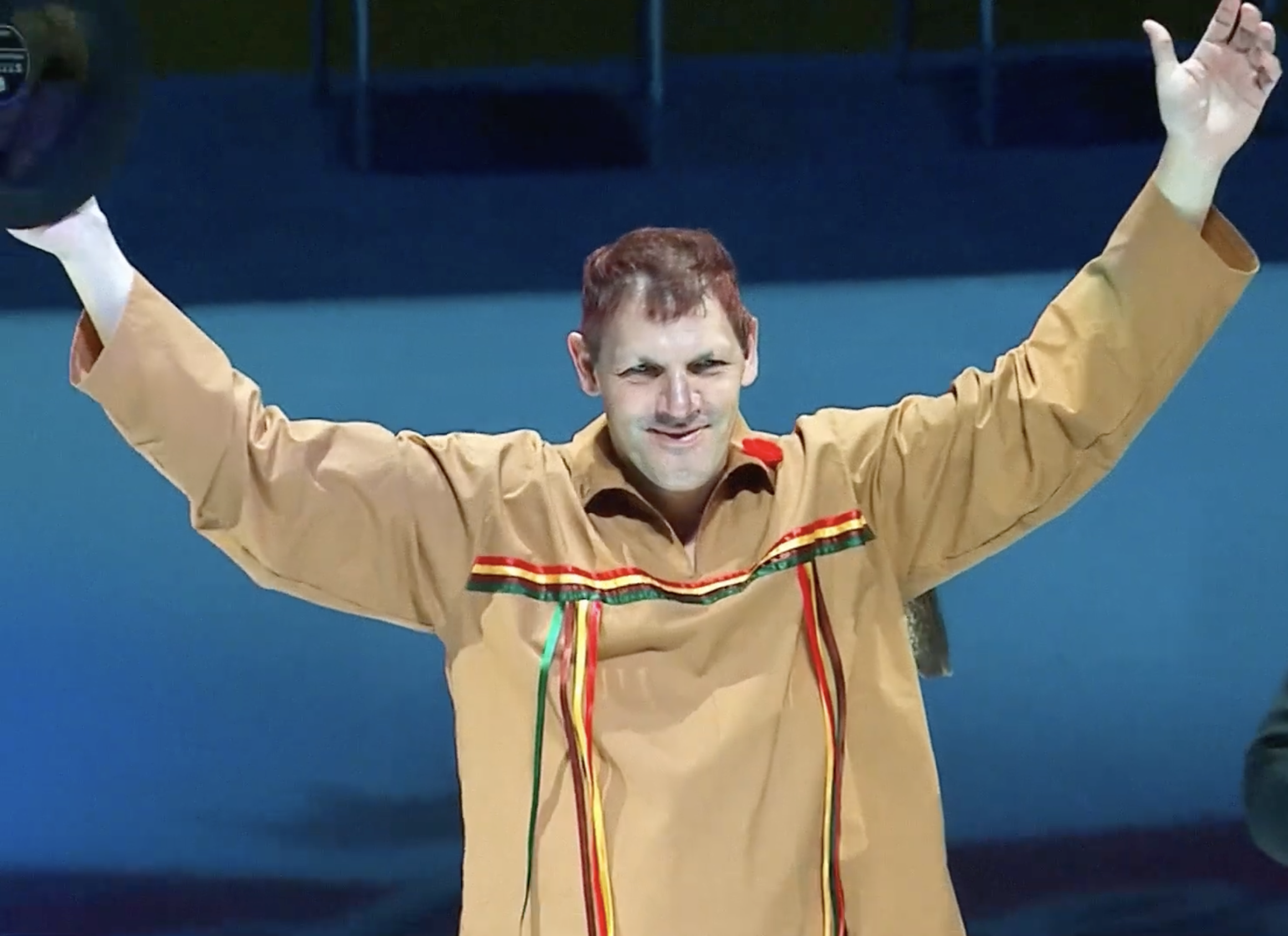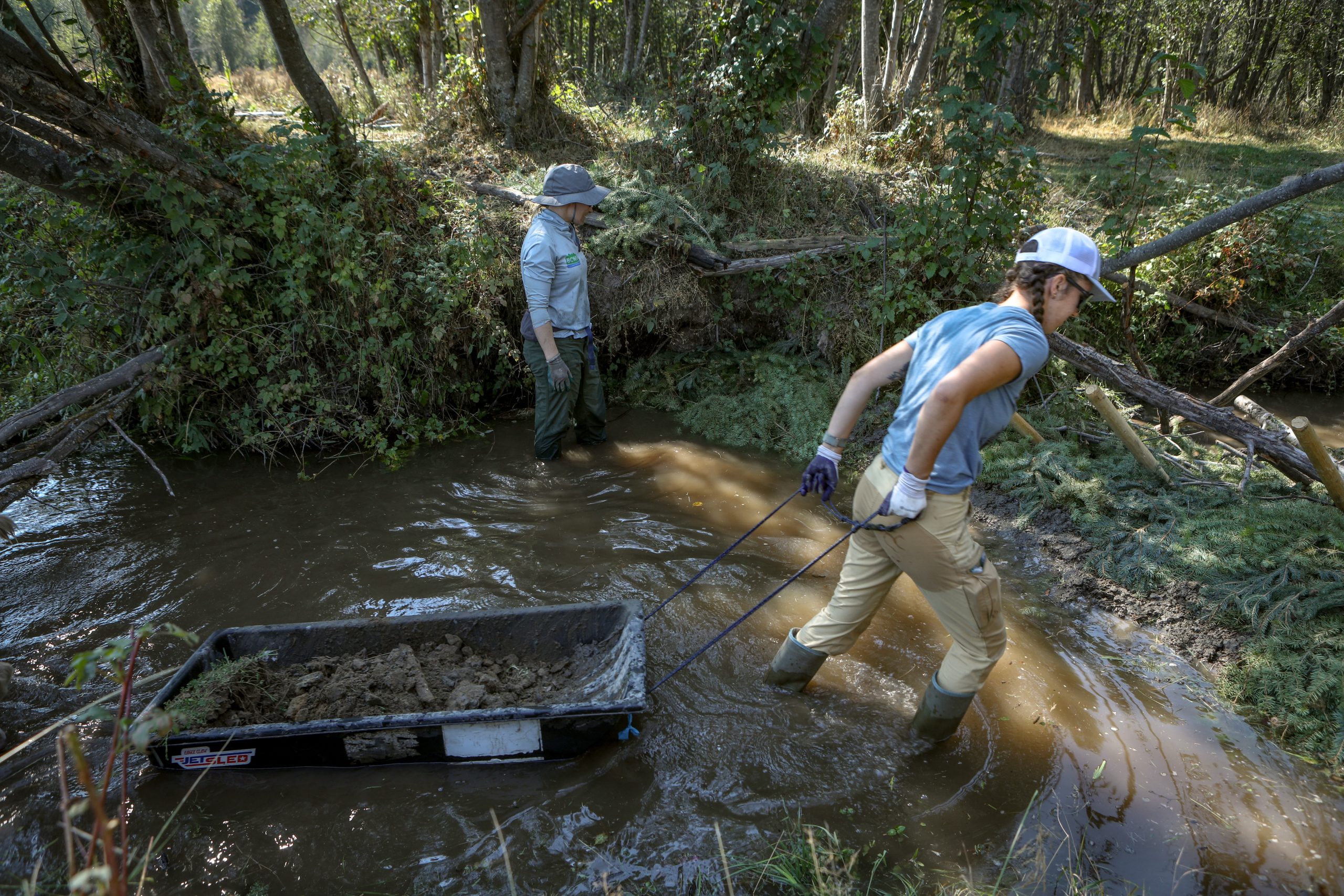səlilwətaɬ exhibition uplifts beauty and strength of boys and men with long hair
‘The Boys Who Braid Their Hair’ was created to educate and empower following a high-profile incident where an Indigenous boy’s long hair was cut in a ‘Saskatchewan’ daycare

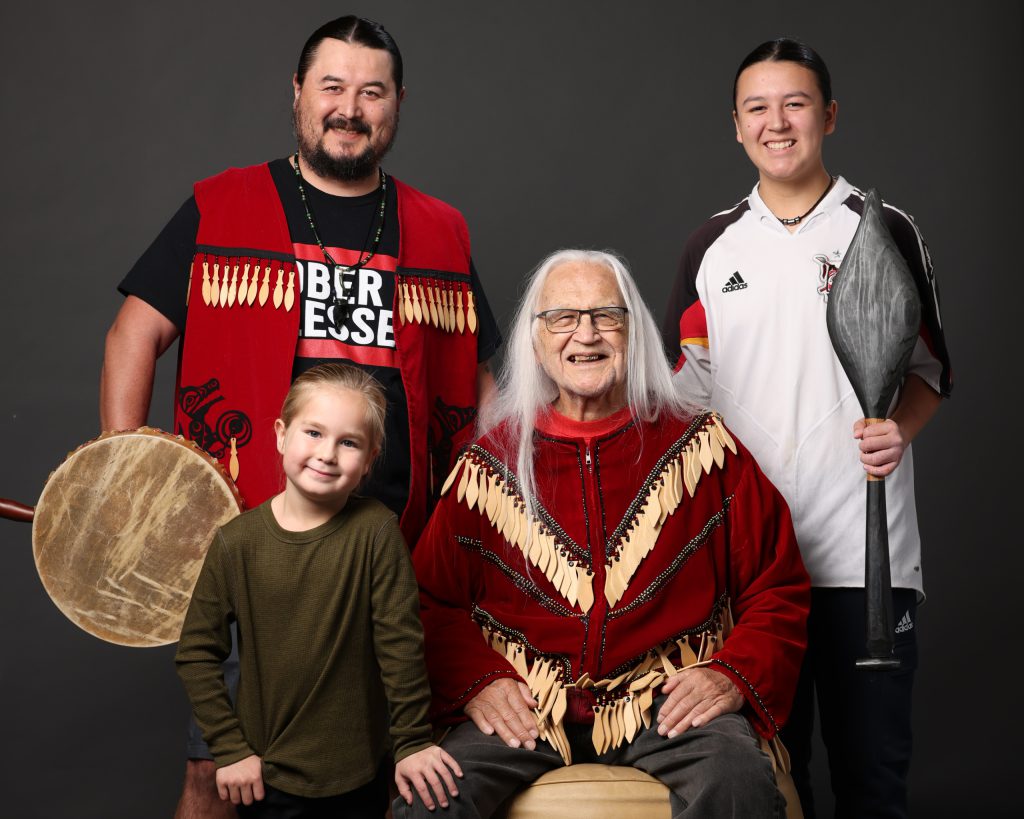
Andrea Aleck grew up living with her grandfather, chief Dan George, who wore his hair long past his shoulders. It was always normal to see men and boys with long hair.
So while watching the news in 2022, Aleck was “quite alarmed” when she saw a report about a Saskatoon daycare that was closed after a Métis child’s hair was allegedly cut by an adult who worked there.
Long hair and braids hold a strong cultural and spiritual significance for many Indigenous people, and hair is often only chopped off during times of mourning.
The child’s mother alleged that the daycare operator justified the violent act to her, stating “she didn’t like long hair on boys and that Indigenous children shouldn’t have long hair,” according to Global News. The daycare’s license was cancelled by the Saskatchewan Ministry of Education.
“That was shocking to me that in this day and age, these things are still happening to our Indigenous children,” said Aleck.
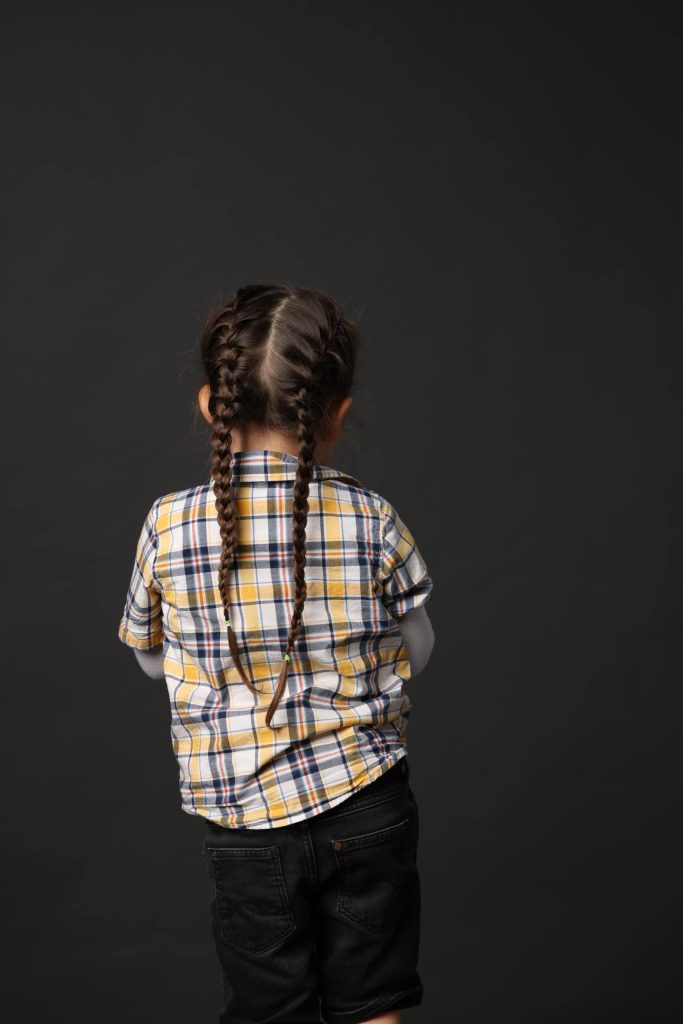
As director of health and wellness for the səlilwətaɬ (Tsleil-Waututh) Nation, Aleck was moved to consider the experiences of boys in her local school district, and wondered how she could share with them the teachings she received growing up.
“That’s when I came up with the idea to create this campaign for our young boys and men in our community.”
Aleck’s campaign, “The Boys Who Braid Their Hair,” started life as a two-day exhibition at the Polygon Gallery in early April, before touring to the Nature House at Maplewood Flats, where it is now on view.
The intention, said Aleck, is to uplift and to share snəw ̓eyəɬ (teachings). “To be able to foster a sense of pride and belonging, and a connection not only to our land and people, but also our heritage.”
Crucially, both the Polygon Gallery and Natures House are located on the shores of səlilwət (the Burrard Inlet) — the heart of səlilwətaɬ territory.
“As səlilwətaɬ, we are ‘People of the Inlet’ and our connection to water is so deep and profound our creation stories come from the mother inlet,” said Aleck.
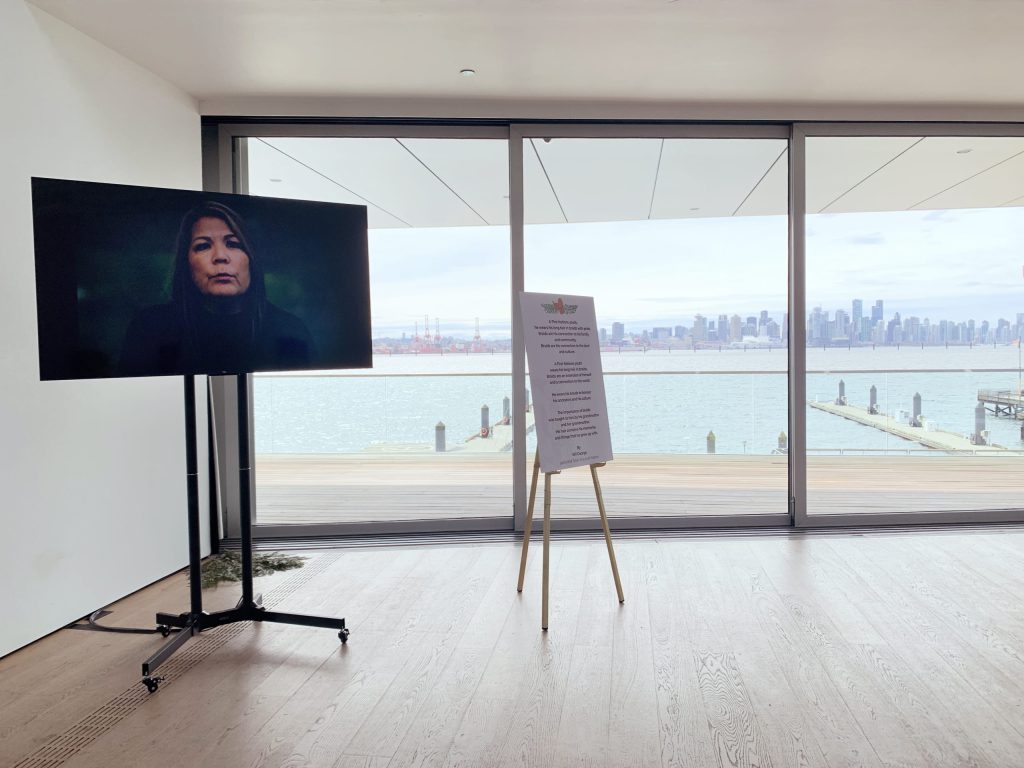
With sweeping views of the ancient highway where səlilwətaɬ peoples have paddled since time immemorial, the Polygon exhibition displayed around two-dozen photographs by Nancy Bleck and Derek Stevens of səlilwətaɬ boys, men and Elders proudly wearing their long hair and braids in a series of family-style portraits.
Accompanying the photographs is a short documentary featuring interviews from Elders, men and Youth, and footage from the day of braiding and photography.
“The longer my hair grew, the more comfortable I became in my own skin,” said one Youth in the documentary.
Cedar bows lay in each of the four corners of the exhibition space, “to protect the spirit of the work, the spirit of the images, and to also ground and bless the space,” said Aleck.
Aleck said she was inspired by basketball star Michael Linklater’s “Boys with Braids,” an international movement that celebrates Indigenous boys and their hair. Linklater, who is nehiyaw (Cree) from Piyesiw-Awasis (Thunderchild First Nation) was bullied at school for his braids. But in 2014, he used his fame in sports to raise awareness and educate the public about the cultural significance of long hair for Indigenous boys and men.
“Individuals don’t really understand the teachings around touching somebody’s hair without permission,” said Aleck. “You’re interrupting the sacredness and their spirituality and the connection of that hair for that individual.”
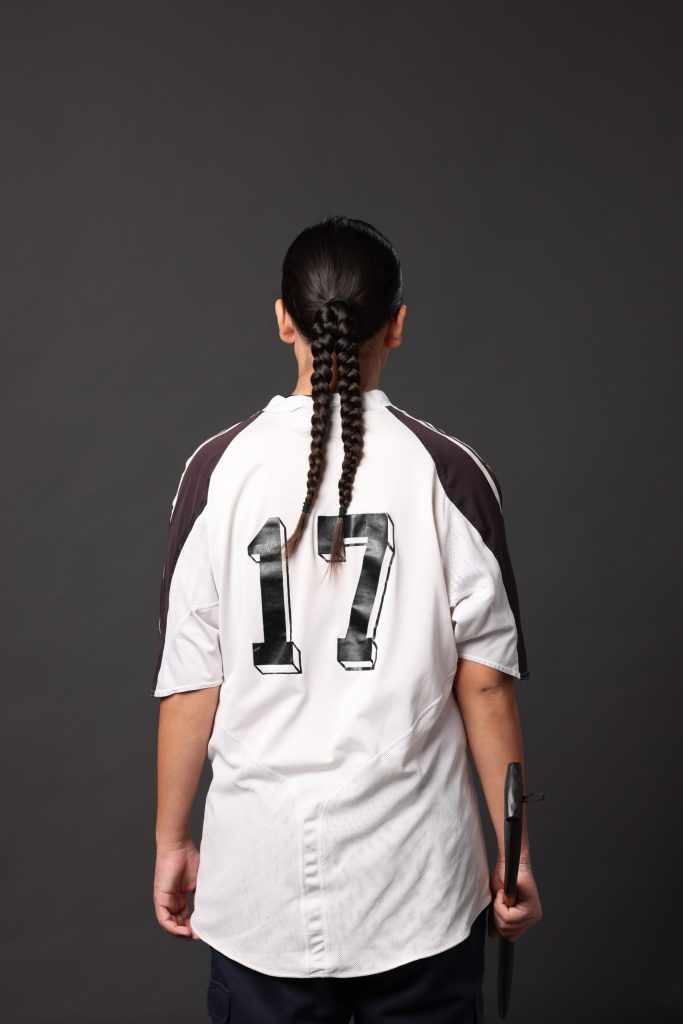
Aleck also hopes the project helps to bridge the generational gap between young children and Elders. “Our Elders have the ability to share the teachings behind our hair, and what a blessing and a gift it is to be in this space and time where we have the right to choose to grow our own hair.”
Aleck recounted how painful it was to see the news about the child’s hair being cut in daycare and be reminded of the children whose hair was forcibly cut short at residential “schools.”
“It’s like reclaiming the strength that was taken from our grandparents,” said another Youth in the documentary.
səlilwətaɬ has invited schools within the “North Vancouver” district to the exhibition at Nature House. It’s Aleck’s hope that this will begin a conversation and offer an opportunity for səlilwətaɬ to visit those “North Vancouver” schools, and others, for further education.
“We want to share in a really kind and gentle way the respect that we have for ourselves, but also what’s really important is cultivating safe spaces within the school system for our children, and making sure that they’re culturally safe.”
In preparation for this, səlilwətaɬ is developing an educational toolkit that includes a poster campaign.
Aleck says each poster will carry a cultural teaching. “For example, one poster will say ‘My hair is sacred, it holds my medicine.’”
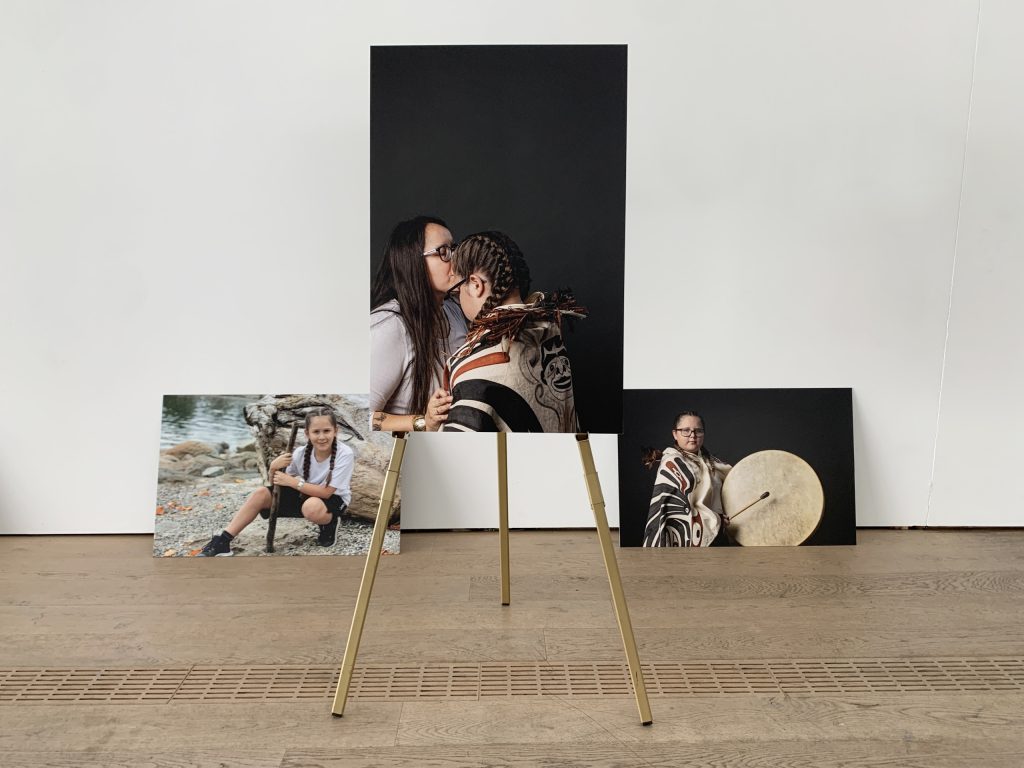
“I think when we start framing the importance of hair and the connection to Creator and spirituality and who we are, then people will really identify that this is something that is sacred and to be respected.”
“The Boys Who Braid Their Hair” is on view to the public free of charge at The Nature House at Maplewood Flats every Tuesday, Thursday, Saturday and Sunday, from 11 a.m. to 3 p.m. until May 19.
Author
Latest Stories
-
‘Bring her home’: How Buffalo Woman was identified as Ashlee Shingoose
The Anishininew mother as been missing since 2022 — now, her family is one step closer to bringing her home as the Province of Manitoba vows to search for her
-
Book remembers ‘fighting spirit’ of Gino Odjick, hockey’s ‘Algonquin Assassin’
Biography of late Kitigan Zibi Anishinabeg left winger explores Odjick’s legacy as enforcer in the rink — and Youth role model off the ice
-
St. Augustine’s survivor hopes for closure after evidence of 81 unmarked graves released
50 years after the residential ‘school’ closed, shíshálh Nation announces evidence of many burial sites. A Tla’amin Elder wonders how many more children died



